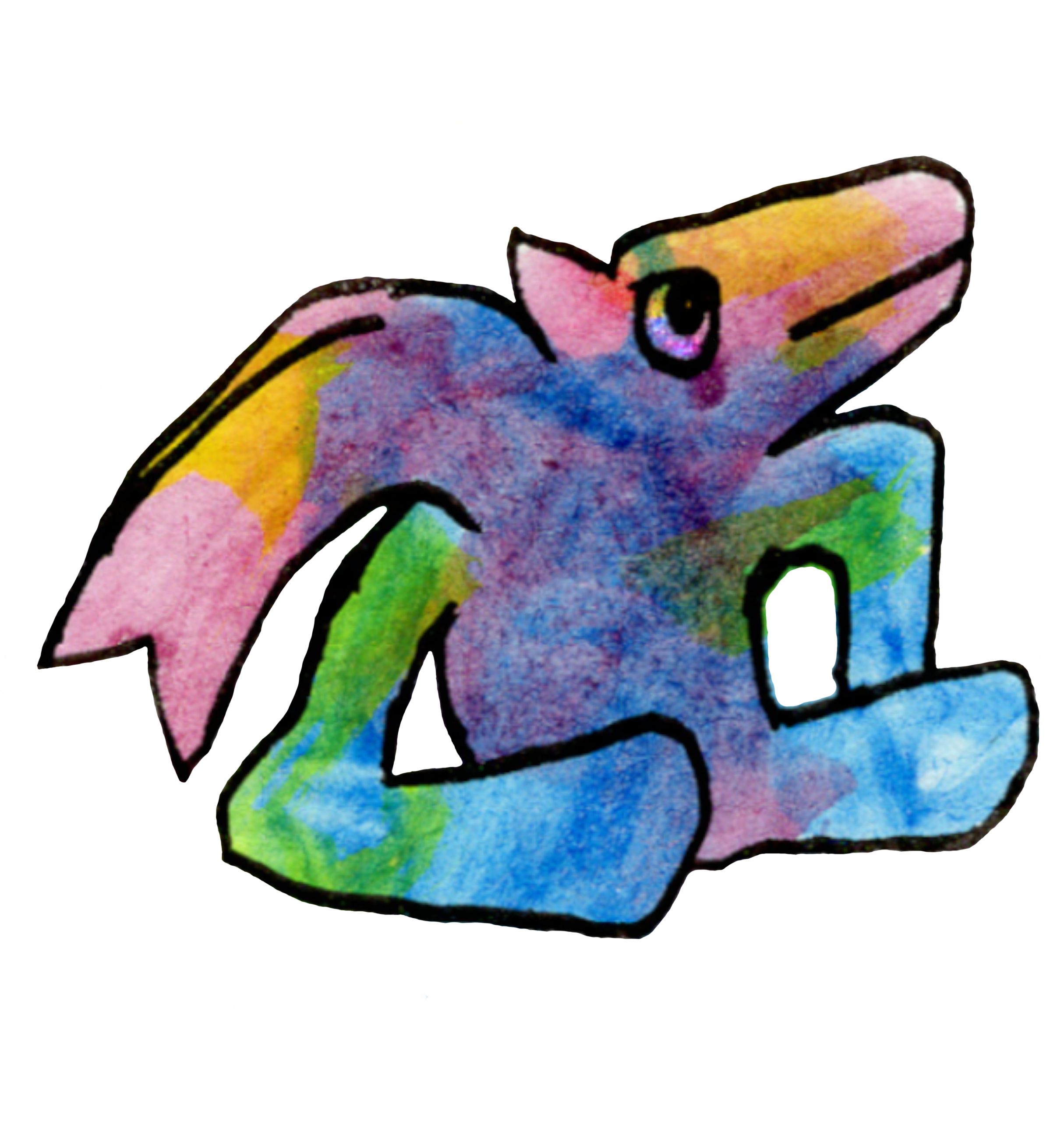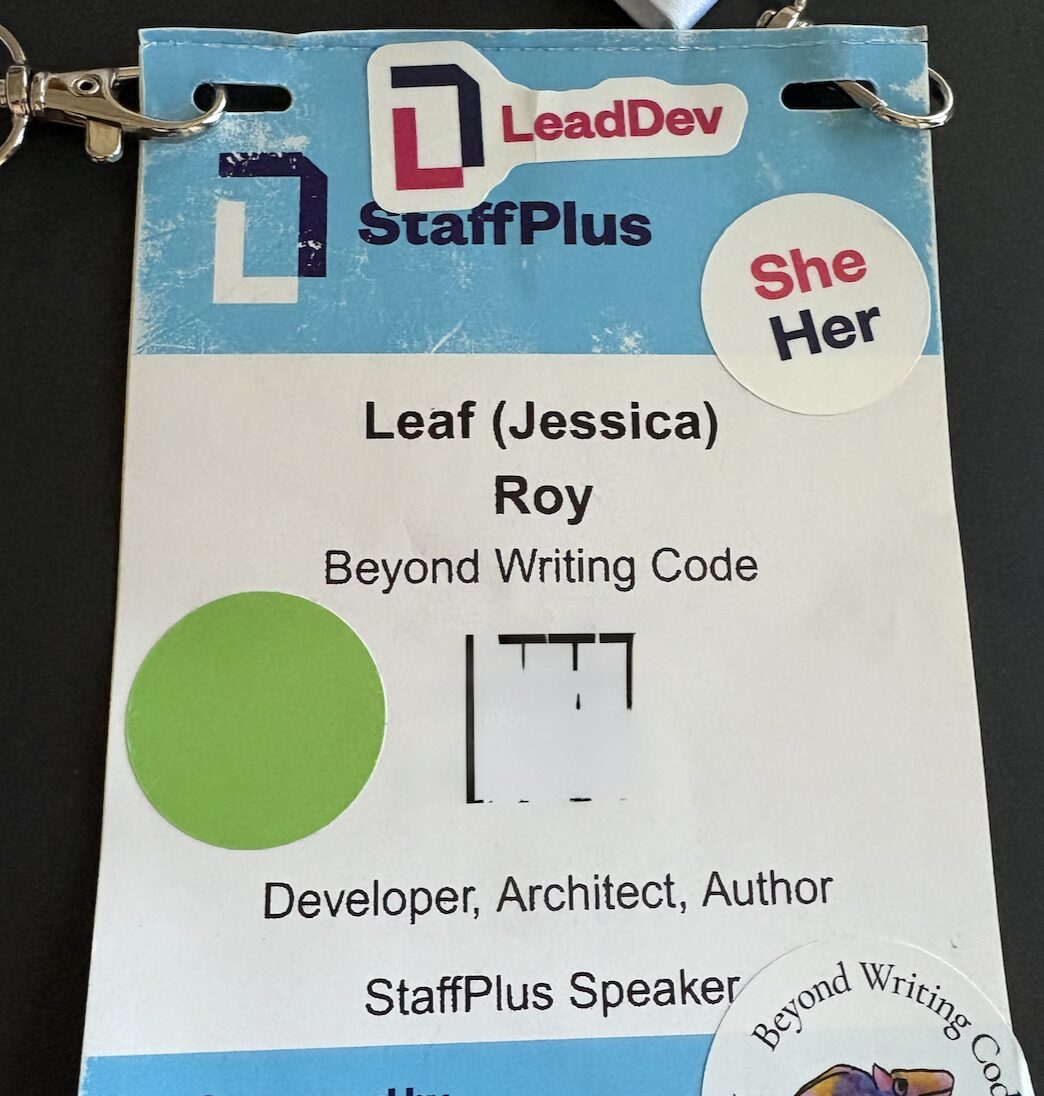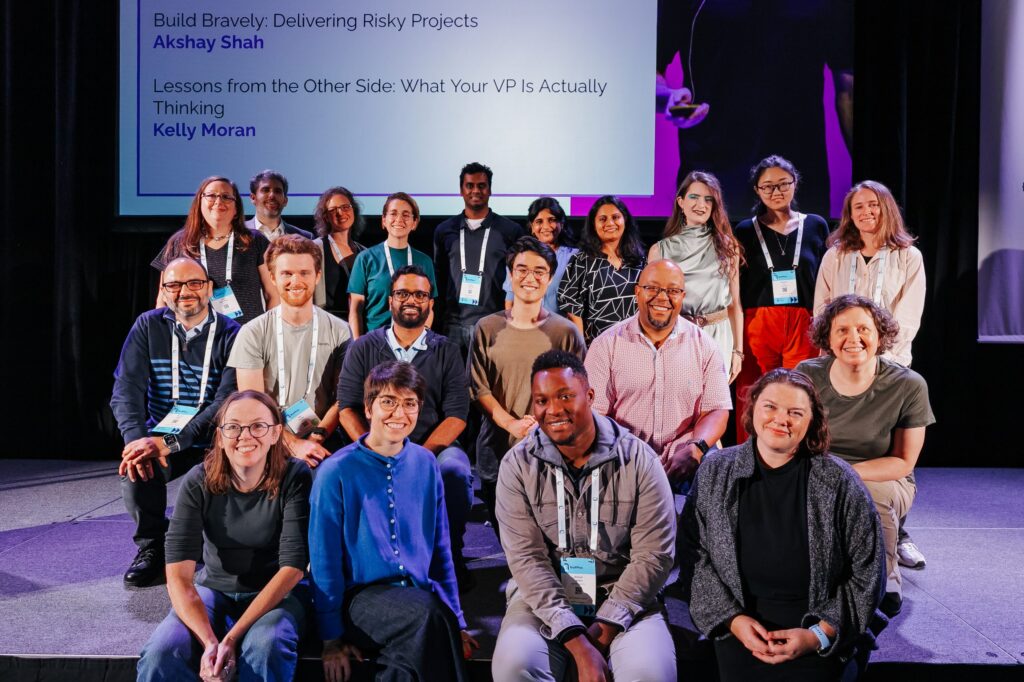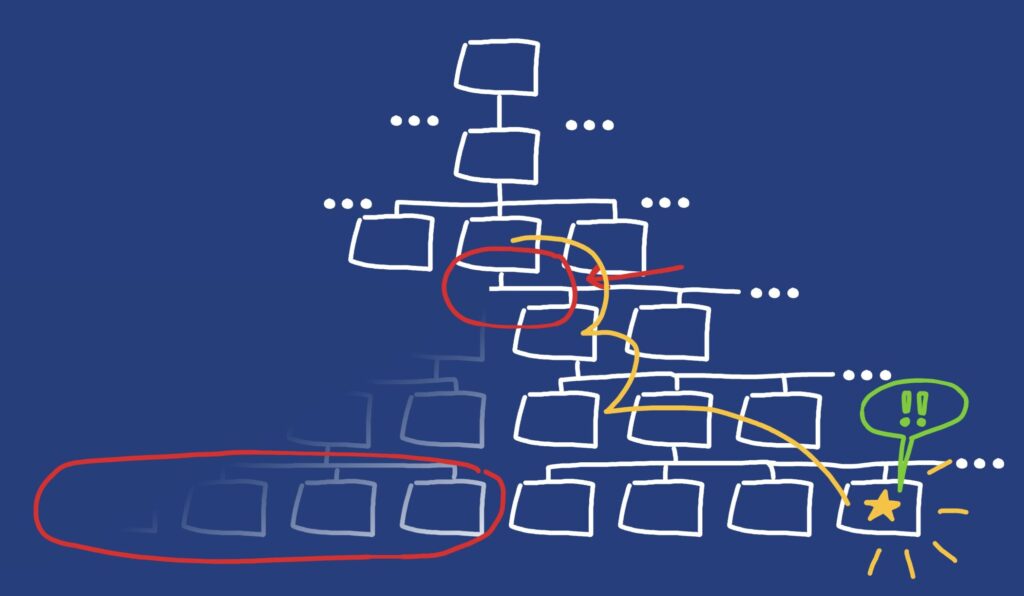That’s right, I went to three conferences in three months (2.5 months, really). Enterprise Technology Leadership Summit (ETLS) in Las Vegas in September, I spoke at LeadDev StaffPlus in NYC in October, and I went to the Grace Hopper Celebration (GHC) in Chicago in November.
And somewhere in there I also took a week-long vacation to Cape Cod, too. I was so tired when I got home from GHC…
Let’s talk about conferences!
Speakers
I found speakers (both mainstage and breakout sessions) inspiring at all three conferences.
But it’s hard to beat the legendary Gene Kim for industry connections. ETLS speakers, especially on the main stage, were jaw-droppingly good.
If I hadn’t been to the same conference in 2023 and 2024, I would have wondered after day one what the conference committee was thinking, putting all their best speakers on the same day. But no, they put their best speakers on every day of the conference.
I truly don’t know how they do that every year.
Winner: ETLS, even though I spoke at LeadDev.
Here I am speaking at LeadDev StaffPlus. It was so fun!

Community
But why go to a conference at all? You can watch great speakers online.
For me, it’s about those in-person interactions. Especially the longer and more meaningful conversations during workshops, in the hallway, and over meals.
Now, I gotta hand it to GHC for assembling 13,000+ women in tech in one space. That’s a feat.
But sheer size alone made it harder to connect. GHC employed something called Braindate, which would have addressed this problem so well if it hadn’t run into so many snags… the one Braindate session I attended at GHC was one of the highlights of my conference.
ETLS does a wonderful job of making it easy to find people over food – breakfast, lunch, and evening social events were all excellent opportunities to connect with attendees, vendors, and speakers.
And Jeff Gallimore encourages people: when you’re in a group, leave the circle a little open so new people can join. Be a croissant, not a donut!
LeadDev, by far, had the most inclusive and welcoming conference. Thought and care were given to attendees’ needs. And I love the idea of speaker office hours – way more friendly than a few rushed minutes at the end of a presentation to call out questions. I’m hoping I introduced the croissant to LeadDev!
GHC knocks it out of the park for speaker diversity, but LeadDev also did very well in that category.
Winners: ETLS and LeadDev, tied. I felt like I was joining a community of friends at both.
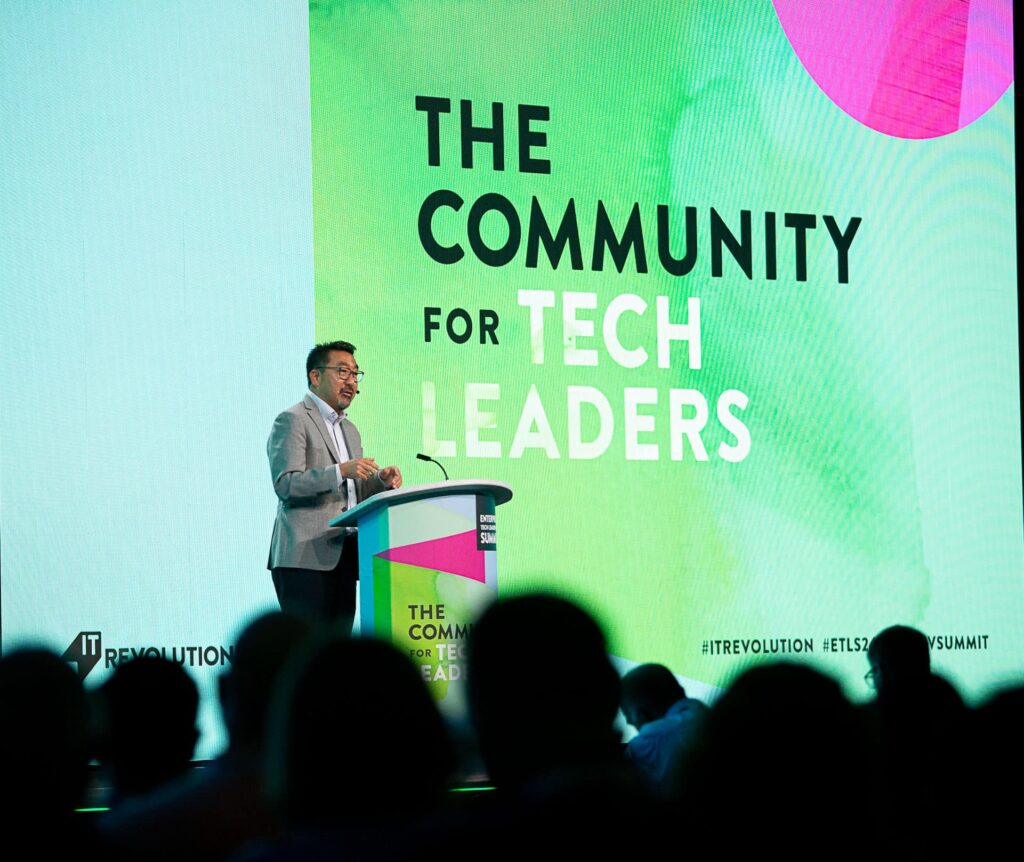
Venue and Food
This must be the third hardest problem in computer science, after cache invalidation and naming things.
ETLS: Good hotel, good conference space… but, ugh… Vegas. Not my favorite place. I walked 20 minutes to a drugstore to buy spring water because I won’t pay $8/bottle for it. But the conference provided breakfast and lunch daily, as well as “heavy appetizers” in the evenings. The food options, both at the conference itself and near the conference, were the best of the three. Maybe that’s why the tickets were so expensive…
LeadDev: Conference space seemed a bit small for the need, but the North Javits Center was probably the nicest space of the three. No hotel was close to the conference center, though. The speaker hotel gave me a room the size of a postage stamp, but it had a drugstore across the street, which was great. NYC is overwhelming. But at least it’s close to home for me? Lunch was provided, but otherwise, food options were on your own in NYC, with nothing especially near the conference center. I ate at the hotel diner more than I’d have liked.
GHC: I spent a minor fortune staying at the hotel onsite, but it was by far the best hotel of the three. Chicago’s my favorite city of the three, and it was easy enough for me to get to. But holy cannoli, enormous venue, and you can only get from floor to floor by escalator. They had spring water onsite, but food, and even coffee, was from the conference center vendors, and there was a line everywhere you went. This made it hard to connect with people over food or even to eat at all between sessions. At least I could get grocery delivery to my hotel, unlike Vegas. And the restaurant/bar at the hotel had good food for dinner.
Winner: Ehh. Nobody!
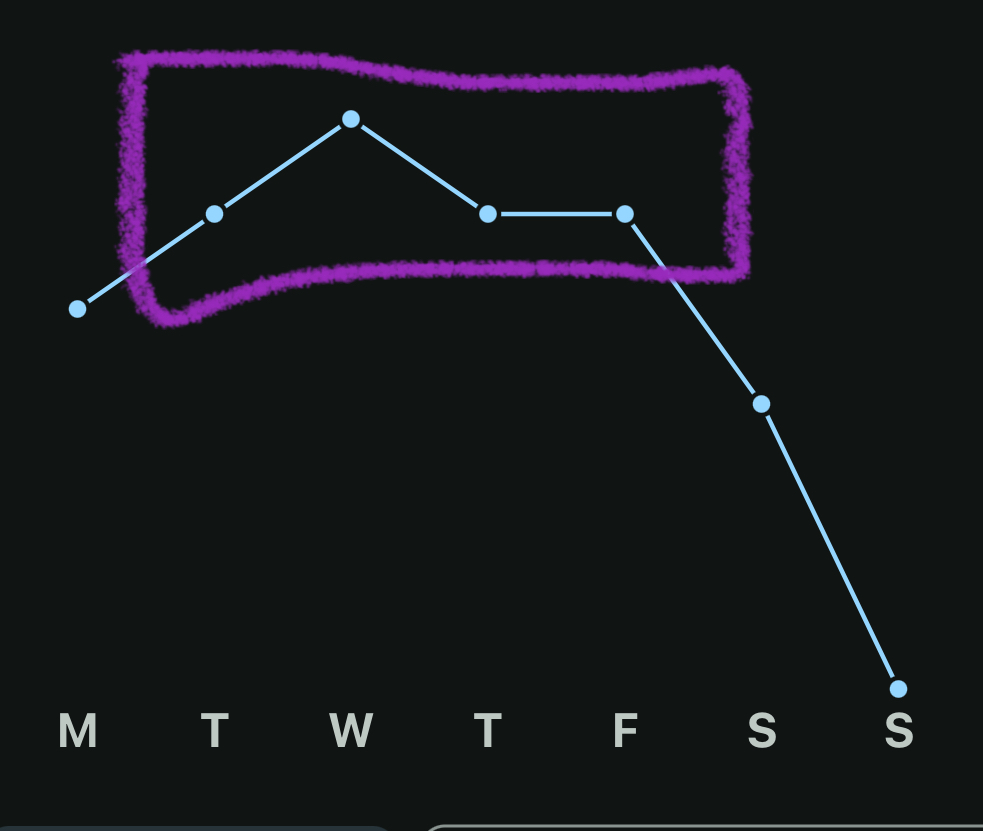
My resting heart rate is always a few bpm higher during a conference. Here’s last week, with Grace Hopper Celebration in the purple box.
What will I do next year?
If all three conferences overlap, which would I choose?
If I take speaking out of the picture, probably ETLS, although LeadDev would be very tough to pass up. Maybe I’ll stay at a different hotel for LeadDev.
If I speak… that puts GHC back in the running. GHC won’t put me on the main stage at this point in my speaking career, but I’d like to experience that conference as a speaker. That would help, I think, with making connections.
That said, the speaker experience was the best at LeadDev.
I’m just going to hope that they aren’t three conferences in one week next year!
And furthermore…
Also on my radar: Fast Flow Conf. Which overlapped with LeadDev this year, so I’m probably doomed for 2026…
What conferences do you go to? Why do you like going there in person?
